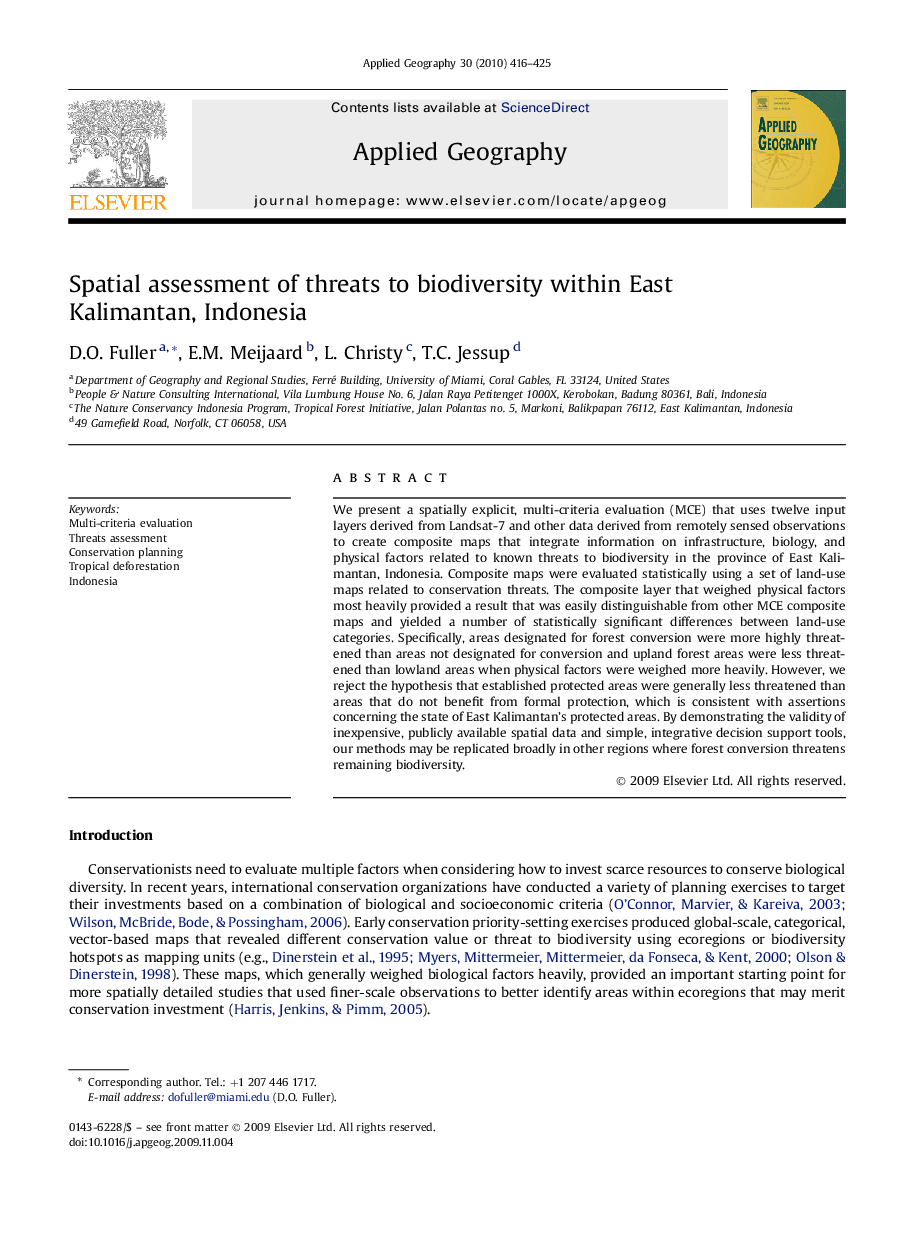| Article ID | Journal | Published Year | Pages | File Type |
|---|---|---|---|---|
| 83676 | Applied Geography | 2010 | 10 Pages |
We present a spatially explicit, multi-criteria evaluation (MCE) that uses twelve input layers derived from Landsat-7 and other data derived from remotely sensed observations to create composite maps that integrate information on infrastructure, biology, and physical factors related to known threats to biodiversity in the province of East Kalimantan, Indonesia. Composite maps were evaluated statistically using a set of land-use maps related to conservation threats. The composite layer that weighed physical factors most heavily provided a result that was easily distinguishable from other MCE composite maps and yielded a number of statistically significant differences between land-use categories. Specifically, areas designated for forest conversion were more highly threatened than areas not designated for conversion and upland forest areas were less threatened than lowland areas when physical factors were weighed more heavily. However, we reject the hypothesis that established protected areas were generally less threatened than areas that do not benefit from formal protection, which is consistent with assertions concerning the state of East Kalimantan's protected areas. By demonstrating the validity of inexpensive, publicly available spatial data and simple, integrative decision support tools, our methods may be replicated broadly in other regions where forest conversion threatens remaining biodiversity.
